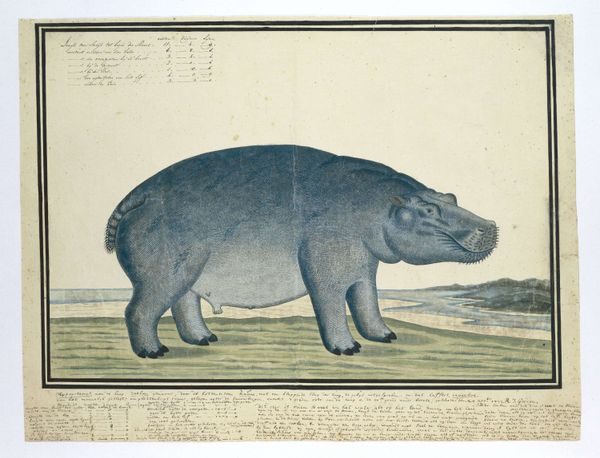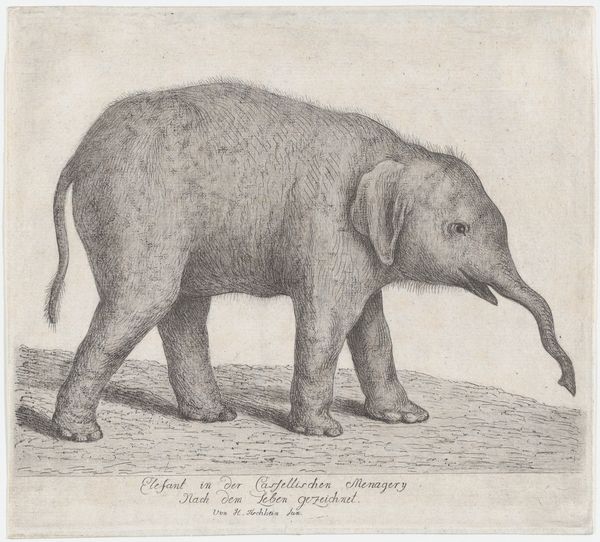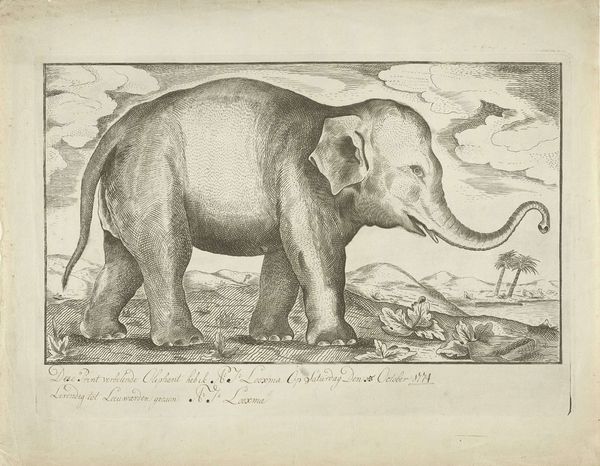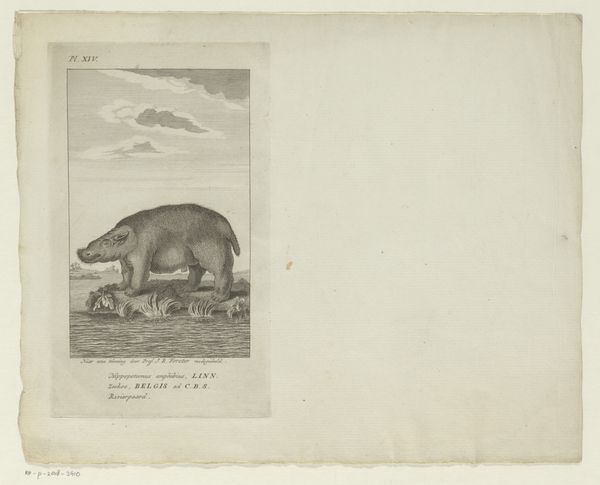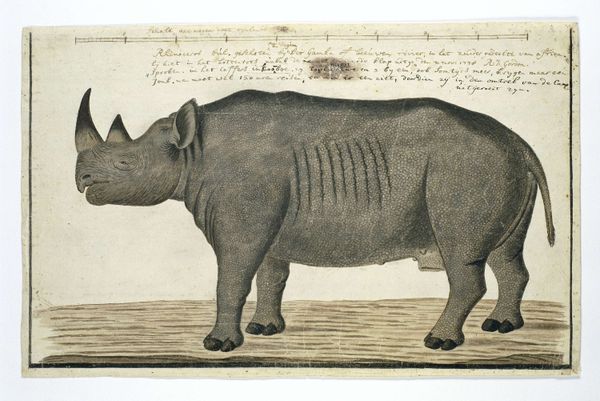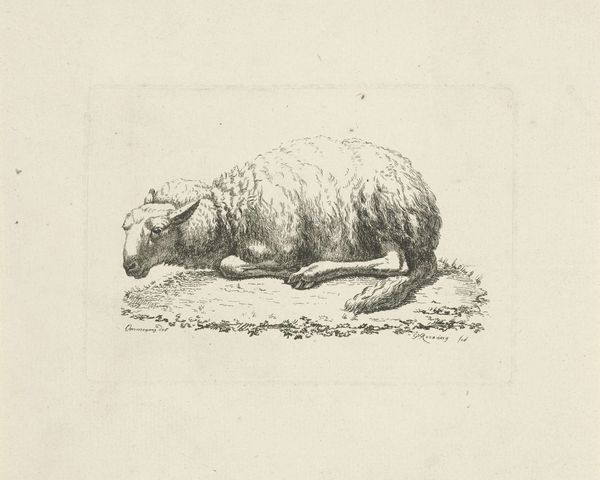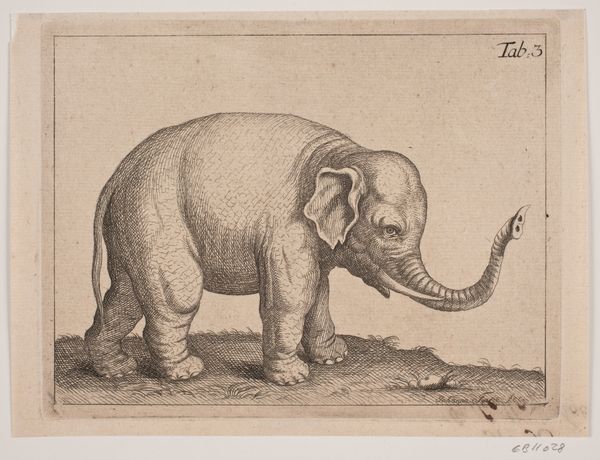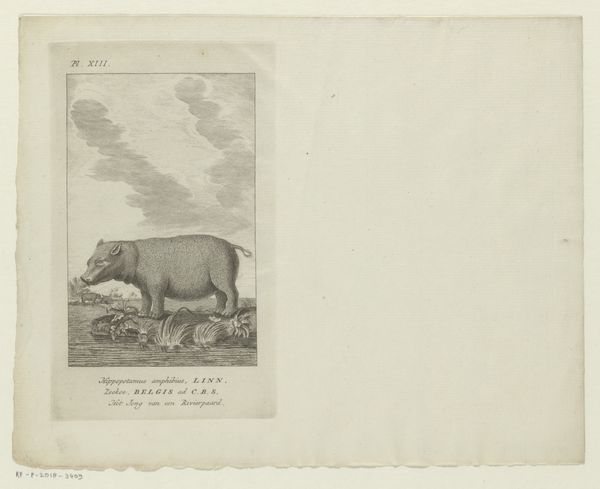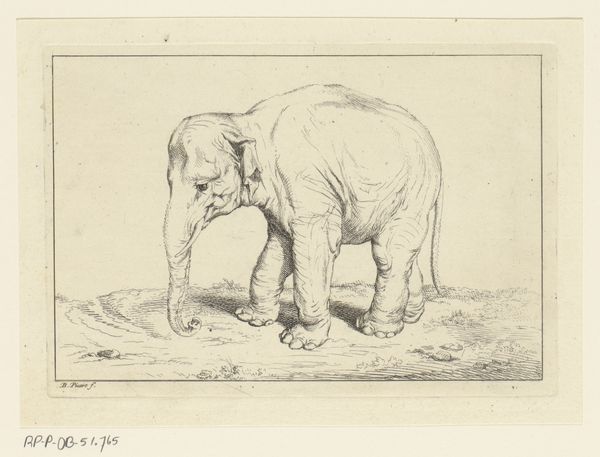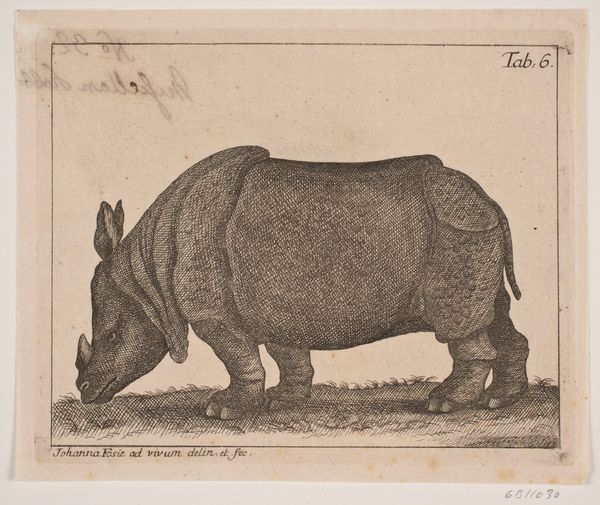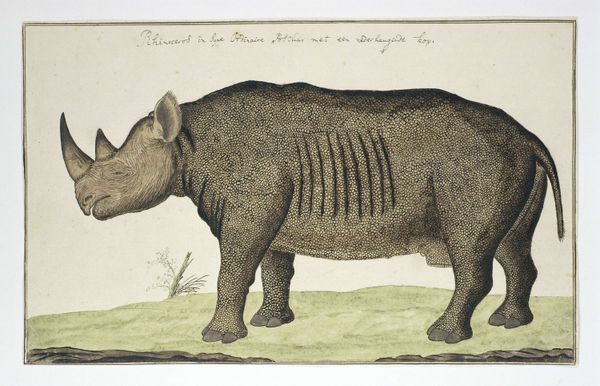
drawing, pencil
#
portrait
#
drawing
#
animal
#
landscape
#
pencil drawing
#
pencil
#
15_18th-century
#
realism
Dimensions: height 660 mm, width 480 mm, height 372 mm, width 498 mm, height 321 mm, width 466 mm
Copyright: Rijks Museum: Open Domain
Editor: Here we have Robert Jacob Gordon’s pencil drawing, likely from 1778, titled *Hippopotamus amphibius capensis*. It’s incredibly detailed, almost scientific in its precision. It's not a romantic view of nature but a record, a document. What do you see in this piece that might reveal more than just scientific illustration? Curator: I see layers of cultural perception embedded within the image. Note how the artist meticulously renders the hippo, yet places it within a landscape that feels almost secondary. What does this suggest about the relationship between the observer and the observed, the colonizer and the colonized? Editor: It's like the landscape exists only to contextualize the hippo. The writing also indicates a scientific approach…lengths and sizes. Curator: Exactly. And those measurements tell a story. They are symbols of control, of a desire to quantify and categorize the natural world, stripping it of its inherent mystery. The hippo itself becomes a symbol, standing in for the wildness that Europeans were attempting to understand, tame, and ultimately, exploit. Notice the hippopotamus has its back turned towards the unknown wild, it faces civilization: could this position hold symbolic meaning? Editor: So the image is not just about the animal, but about the act of observing and the power dynamics involved? Curator: Precisely. It reveals a moment in time when European understanding of the world was shifting, driven by scientific curiosity, imperial ambitions, and a persistent need to classify and control. The hippo becomes a mirror, reflecting the values and assumptions of the society that created the image. The drawing, so objective on the surface, is heavy with psychological weight. Editor: I hadn't considered the psychological impact embedded in scientific representation. Thanks for showing me that. Curator: It reveals how we continuously imprint our own narratives upon the images we create, unconsciously influencing how they're understood by future generations. The image carries cultural memory, urging continuous re-evaluation.
Comments
No comments
Be the first to comment and join the conversation on the ultimate creative platform.
